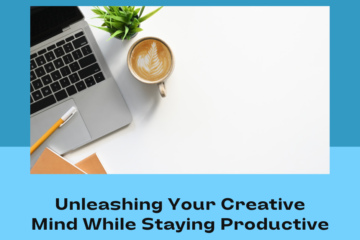
Introduction:
Stress is a common part of modern life, but even after a century of study, Understanding Stress is still hard and has many different parts. Everyone can relate to this common experience, which makes it seem like the meaning of stress should be simple, but it’s actually very complicated. This piece takes you on a journey through the maze of stress, looking at where it came from, how it changed over time, and how it affects our lives. We look at the groundbreaking work of Hans Selye and Richard S. Lazarus, the fight-or-flight idea, and the effects of stress on our daily lives. We want to figure out the mysteries of stress and give you a way to deal with the chaos it often causes, in between the academic talk and the natural human reactions.
Unravel the mysteries of stress and discover pathways to tranquility
Over the past 100 years, our ideas about worry have changed a lot. Several ideas have been strongly put forward, heatedly debated, and carefully looked at. Still, despite all the confusion in the academic world, one thing is clear: we have all felt stress, which makes it hard to define.
The Evolution of Stress Theory
Hans Selye, who was one of the first people to study stress, said that worry isn’t always bad in 1956. He thought that the biochemical effects of stress were the same whether the source of worry was good or bad. He drew a comparison between the stress that comes from doing good, creative work, which he thought was good, and the stress that comes from failing or being embarrassed, which he thought was bad.
But as science moved forward, the story about stress changed. At the moment, stress is mostly seen as a bad thing that can have damaging biochemical and long-term effects and is rarely seen in good situations.
Defining Stress
Most people agree with Richard S. Lazarus’s description of stress, which says that stress happens when a person feels that “demands exceed the personal and social resources the individual can mobilize.” To put it more simply, we feel stressed when we feel like we have no control over what’s going on.
This statement is the most important thing we know about stress. But it’s also important to know that stress reactions can be automatic and caused by things you didn’t expect. So, the way people react to worry is a mix of instinct and knowledge.
Survival Instincts: Fight-or-Flight
In 1932, Walter Cannon did some early study on stress and came up with the idea of the “fight-or-flight” response. This natural reaction makes our bodies release hormones that help us stay alive when we are scared or in danger.
Like in other animals, these hormones make it easier for people to run faster and fight harder by speeding up the heart rate and blood pressure and sending more oxygen and blood sugar to important muscles. They also make these muscles sweat more to cool them down, send blood from the skin to the core of the body to limit blood loss from possible cuts, and make it easier to focus on the threat and ignore everything else. In life-threatening situations, this is the only way to stay alive.
But the fight-or-flight response isn’t just for times when your life is in danger. We feel it in different ways whenever something unexpected happens or something gets in the way of what we want to do. How big the reaction is depends on how big the threat is. Small threats cause small reactions, which are often missed because the stressor is distracting.
The Downside of Survival Instincts
Even though the fight-or-flight reaction helps us stay alive, it also has some bad effects. It can make us jittery, nervous, and short-tempered, and it can make us less effective with other people. Our shaky bodies and racing hearts can make it hard to move in a precise, controlled way, and the increased focus on life may make it harder for us to make nuanced decisions. The end result is that accidents and bad decisions are more likely to happen.
Instead of a fight-or-flight reaction, most modern work-life situations call for a calm, logical, controlled, and socially aware response. So, keeping this reaction in check is important for both short-term job performance and long-term health, as well as to avoid burnout.
The Difference Between Eustress and Stress
Hans Selye came up with the ideas of “eustress” (which means “good stress”) and “distress” (which means “bad stress”). He thought that a small amount of stress could make animals and people more busy, but that too much stress could hurt performance.
Over time, other people have come up with similar ideas, but they use the word “pressure” instead of “stress.” Today, real worry is always seen as a bad thing because it makes people feel unhappy and out of control. So, the ideas of “eustress” and “distress” are no longer used. They could lead to bad things, like bosses trying to motivate their employees by making them feel more stressed out.
The crucial distinction to remember is that “pressure” is not synonymous with “Stress”
Stress can cause serious health problems and, in the worst cases, even death. The suggested ways to deal with stress are meant to be a guide, not a replacement for the help of qualified health professionals. If worry is making you sick or keeping you from being happy, you should talk to a medical professional. Talk to a doctor or nurse before making any big changes to your food or how much you exercise.
Conclusion:
It’s hard to understand all of the different parts of stress. Even though stress is everywhere and has big effects, we still don’t fully understand what it is and how it works. But to better handle stress, it’s important to understand the different kinds of stress and know the difference between dangerous stress and pressure that makes you work harder. Stress can hurt our bodies and minds if we don’t do something about it. So, it’s important to talk to a health worker about effective ways to deal with stress and any major changes to your lifestyle. Keep in mind that worry is a normal part of life, but it doesn’t have to run your life. We can turn the chaos of stress into a doable part of our path to wellness if we have a full understanding of it and take steps to deal with it.



0 Comments